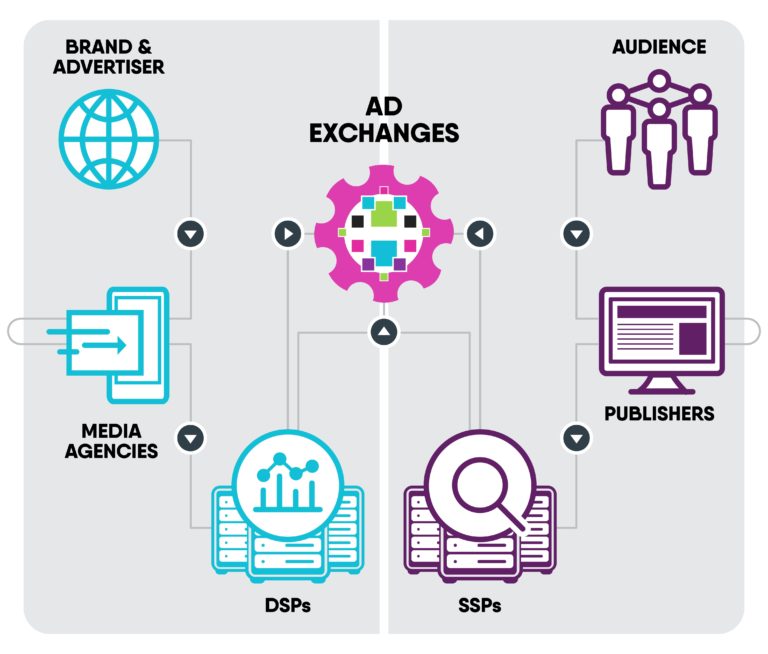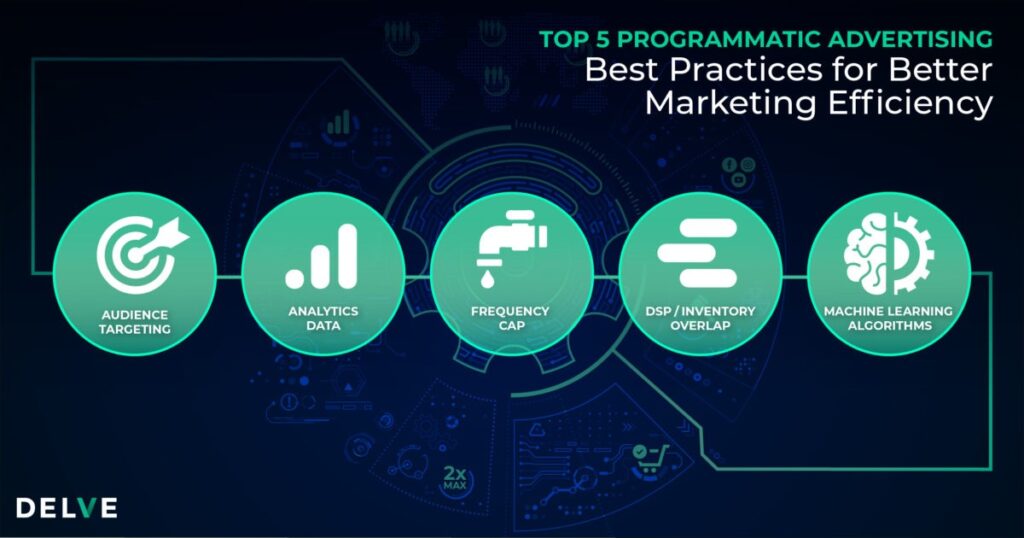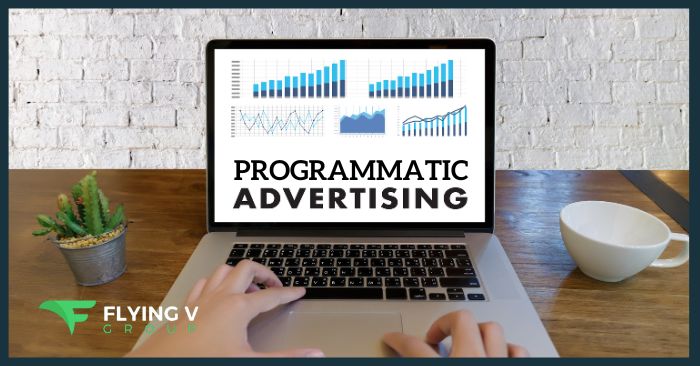People often ask how to learn programmatic advertising. Programmatic advertising is a powerful and efficient way to reach your target audience online.
We will guide you through the process of learning programmatic advertising, step by step.
Programmatic advertising is data-driven approach that automates the buying of digital ads.
It allows advertisers to reach their desired audience with precision, optimizing ad placements in real time.
Whether you’re a marketer looking to expand your skillset or a business owner aiming to improve your online presence, understanding programmatic advertising is essential in today’s digital landscape.
We will break down the fundamentals of programmatic advertising, starting with its core concepts and terminology.
We’ll explain how programmatic advertising works, from ad auctions to targeting options.
We’ll also provide tips on selecting the right programmatic advertising platforms and share best practices to ensure your campaigns are successful.
By the end of this series, you’ll have a solid foundation in programmatic advertising, empowering you to make informed decisions and drive better results for your online advertising efforts.
So, let’s get started on your journey to mastering programmatic advertising!
- How to Learn Programmatic Advertising: The Fundamentals
- How Programmatic Advertising Works
- Best Practices for Programmatic Advertising
- Key Takeaway
- FAQs
- 1. What is programmatic advertising?
- 2. How does programmatic advertising work?
- 3. What are the benefits of programmatic advertising?
- 4. What is real-time bidding (RTB) in programmatic advertising?
- 5. Do I need to be a tech expert to use programmatic advertising?
How to Learn Programmatic Advertising: The Fundamentals
Programmatic advertising is a complex field, but understanding how to learn programmatic advertising and its fundamentals is crucial for success.
At its core, programmatic advertising is the automated buying and selling of digital ads using technology and data.
It eliminates the need for manual ad negotiations and allows advertisers to target their desired audience more effectively.
One of the key concepts in programmatic advertising is real-time bidding (RTB).
RTB is the process of buying and selling ad inventory on an impression-by-impression basis.
Advertisers bid on available impressions, and the highest bidder’s ad gets displayed to the user.
This auction-based system ensures that advertisers only pay for impressions that are valuable to them.
To participate in programmatic advertising, you need to understand the terminology associated with this field.
Some common terms you’ll come across include demand-side platforms (DSPs), supply-side platforms (SSPs), data management platforms (DMPs), and ad exchanges.
DSPs allow advertisers to manage multiple ad campaigns and optimize their targeting.
SSPs help publishers sell their ad inventory, while DMPs collect and analyze data to create audience segments.
Ad exchanges facilitate the buying and selling of ad inventory.
Understanding these core concepts and terminology will help you navigate the programmatic advertising landscape more effectively.
It’s important to stay updated with the latest industry trends and advancements to make the most of this powerful advertising technique.
How Programmatic Advertising Works

Image from Mindstream Media Group
Now that we’ve covered the fundamentals, let’s dive deeper into how programmatic advertising actually works.
The process begins when a user visits a website or opens a mobile app. In real-time, an ad exchange conducts an auction to determine which ad should be shown to the user.
This auction takes into account various factors such as the advertiser’s bid, the ad’s relevance to the user, and the available ad inventory.
To target the right audience, programmatic advertising leverages data. There are two types of data used in programmatic advertising: first-party data and third-party data.
First-party data is collected directly from your own website or app, such as user interactions and behavior.
It provides valuable insights into your existing customers and helps you create personalized ad experiences.
Third-party data, on the other hand, is collected from external sources and provides broader audience insights.
This data can be used to reach new potential customers and expand your reach.
To ensure your programmatic advertising campaigns are successful, it’s important to have a clear understanding of your target audience. Who are they? What are their interests? What are their online behaviors?
You can create relevant and engaging ads that resonate with them.
Additionally, setting clear campaign goals and metrics will help you measure the success of your campaigns and make data-driven optimizations.
Best Practices for Programmatic Advertising

Image from Delve
Now that you have a solid understanding of the fundamentals and how programmatic advertising works, let’s explore some best practices to ensure your campaigns are successful.
These practices will help you optimize your ad placements, improve targeting, and drive better results.
Define Clear Campaign Goal
Before launching a programmatic advertising campaign, clearly define your goals. Are you looking to drive website traffic, increase brand awareness, or generate leads?
When you define your goals, you can align your campaign strategies and metrics accordingly.
Segment Your Audience
Take advantage of data management platforms (DMPs) to segment your audience.
When you divide your audience into specific segments based on demographics, interests, or behaviors, you can create highly targeted ad campaigns that resonate with each segment.
Utilize Dynamic Creative
Dynamic creative allows you to personalize your ads based on the user’s profile or behavior.
You can increase engagement and drive better results by serving relevant ads to each individual.
Dynamic creative can be used to showcase personalized product recommendations, offers, or messages.
Optimize in Real Time
Programmatic advertising allows for real-time optimization. Monitor your campaign performance and make data-driven adjustments to improve targeting, ad placements, and bidding strategies.
Test different creatives, landing pages, and targeting options to find what works best for your audience.
Leverage Retargeting
Retargeting is a powerful strategy that allows you to reach users who have previously interacted with your website or app.
When you serve ads to these users across different websites and platforms, you can remind them of your brand and encourage them to take action.
Monitor Fraud and Brand Safety
With programmatic advertising, it’s important to monitor for ad fraud and ensure brand safety.
Work with trusted partners and use ad verification tools to minimize the risk of your ads being served in inappropriate or fraudulent environments.
Key Takeaway
Programmatic advertising has revolutionized the way businesses reach their target audience online, and learning how to learn programmatic advertising is crucial if you want to succeed.
When you automate the ad buying process and utilize data, advertisers can optimize their campaigns and drive better results.
To excel in programmatic advertising, it is vital to have a comprehensive understanding of its fundamentals, including real-time bidding and key industry terminology.
It is also crucial to comprehend the inner workings of programmatic advertising – from ad auctions to data utilization – to make informed decisions and optimize campaigns effectively.
To maximize the effectiveness of programmatic advertising, following best practices such as defining clear campaign goals, segmenting your audience, utilizing dynamic creative, optimizing in real-time, leveraging retargeting, and monitoring fraud and brand safety is crucial.
When you segment your audience, you can target specific groups of people who are most likely to be interested in your product or service.
Using dynamic creative allows you to adjust ad content in real-time based on the data you collect about your audience.
Retargeting is another effective strategy that allows you to re-engage with users who have already expressed interest in your product or service.
Monitoring fraud and brand safety is also essential while running a programmatic advertising campaign.
Ad fraud, which is the use of fraudulent techniques to generate clicks or impressions, could lead to a waste of ad spend and negatively impact campaign performance.
Ensuring that your ads appear in brand-safe environments is also crucial to maintaining your brand’s reputation.
To summarize, programmatic advertising is a powerful tool that has transformed online advertising.
When you understand the fundamentals, utilize data, and follow best practices, businesses can achieve better results and take their online advertising to the next level.
FAQs
1. What is programmatic advertising?
Programmatic advertising is an automated, data-driven approach to buying and selling digital advertising. It uses algorithms and real-time bidding to target specific audiences with personalized ads across various online platforms.
2. How does programmatic advertising work?
Programmatic advertising works by analyzing user data and bidding on ad impressions in real-time. Advertisers set their targeting parameters, and the system automatically displays ads to users who match the criteria, all within milliseconds of a web page loading.
3. What are the benefits of programmatic advertising?
Programmatic advertising offers several advantages, including precise audience targeting, real-time optimization, cost efficiency, and the ability to reach users across multiple devices and platforms. It also provides detailed performance data for campaign analysis and optimization.
4. What is real-time bidding (RTB) in programmatic advertising?
Real-time bidding (RTB) is a key component of programmatic advertising. It’s the process where advertisers bid on ad impressions as they become available, typically during the page loading process. The highest bidder’s ad is displayed to the user, ensuring efficient and competitive ad placements.
5. Do I need to be a tech expert to use programmatic advertising?
No, you don’t need to be a tech expert to use programmatic advertising. Many user-friendly platforms and tools are available that make it accessible to marketers and advertisers of all skill levels. However, understanding the basics of programmatic advertising, such as terminology and targeting options, is essential to maximize its effectiveness.






0 Comments